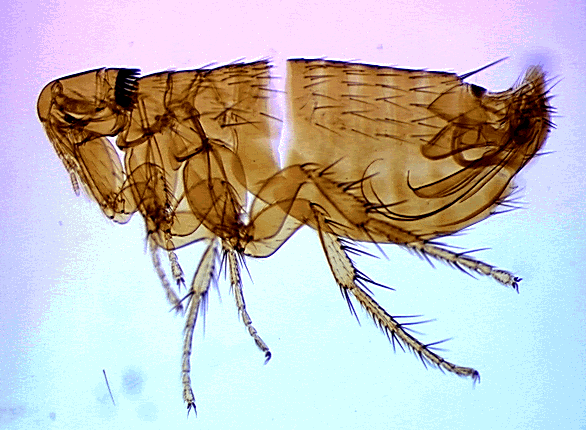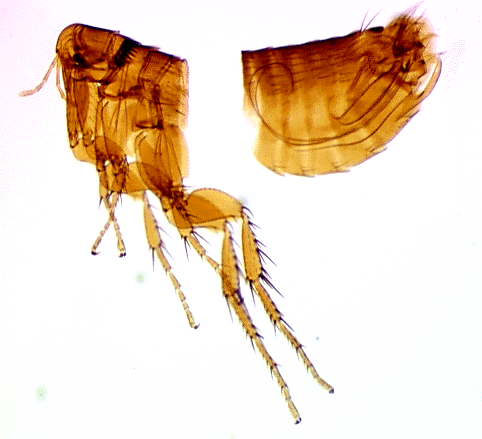Extractions
We have had great success extracting and amplifying DNA from fleas preserved in 70-100% ETOH. If stored in the freezer at – 80 °C, the specimens stay extractable for ca. 5 years after collection. DNA is extracted from fleas without homogenization of tissues by separating the thorax from the abdomen. To extract DNA we usually use the DNeasy® Tissue Kit (Quiagen). However, a regular SDS/Phenol/isoamyl alcohol: chloroform protocol also works.
To mount the specimen it is removed from the extraction buffer and stored in 70% Ethanol. This technique provides us with an excellent source of DNA without destroying the structures used for species identification. The incubation in extraction buffer helps clear the specimen prior to KOH treatment, and these specimens are almost always in better condition (key features are easier to see) than specimens which have simply gone through a KOH treatment without the DNA extraction. After the 10% KOH treatment the specimen is transferred through a series of ethanol concentration for dehydration, reaching a final concentration of 96.7%. The specimen is then transferred to oil-of-wintergreen and xylene and finally mounted on a slide. We prefer Canada balsam as mounting medium. The flea is mounted in a laterolateral fashion, with the dorsum being located towards the lower margin of the slide and the head pointing to right. In the end we have a complete voucher on a slide with which every DNA extraction can be associated. The vouchers are stored in the Entomological Collection of the Monte L. Bean Life Science Museum.



